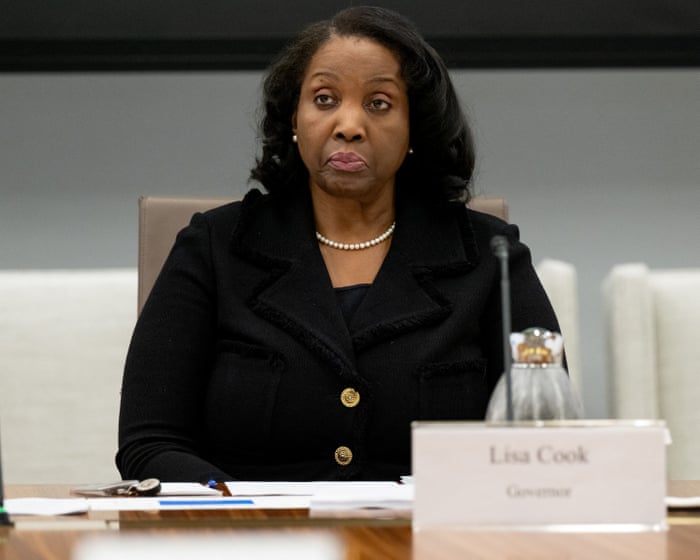
A legal battle is unfolding, with Federal Reserve governor Lisa Cook urging the US Supreme Court to block Donald Trump’s efforts to remove her from her position. Cook argues that such a move would undermine the independence of the central bank and destabilize financial markets. Her lawyers have filed a response contesting the Justice Department’s request to overturn a lower court’s order that prevents Trump from immediately ousting her while her legal challenge proceeds.
Cook’s legal team contends that granting Trump’s request would dramatically alter the established order, disregard historical precedent, and effectively transform the Federal Reserve into an entity subservient to presidential influence. They emphasize that the Fed’s “unique history of independence” has been instrumental in fostering the strength of the US economy. They assert that siding with Trump would send a detrimental signal to financial markets, jeopardizing the Fed’s traditional autonomy and potentially leading to chaos and disruption.
The context of this dispute stems from Trump’s announcement of his intention to remove Cook, the first Black woman to serve as a Fed governor. Cook has contested the allegations cited by Trump as grounds for removal, arguing that they lack the legal basis for her dismissal and are merely a pretext driven by her stance on monetary policy. A lower court judge, Jia Cobb, ruled that the claims of mortgage fraud against Cook, predating her time in office, were insufficient grounds for removal under the 1913 law that created the Fed.
This case carries significant implications for the Fed’s ability to independently set interest rates, a cornerstone of its function in managing inflation. The legal clash has garnered support from a group of former top economic officials, including past Fed chairs and treasury secretaries from both political parties. They have urged the Supreme Court to reject Trump’s petition, fearing that allowing the president to remove Cook during her legal challenge would threaten the central bank’s independence and erode public confidence. The Justice Department, in its filing, views this as an instance of judicial overreach, interfering with the president’s removal authority.
The law establishing the Fed aimed to shield the central bank from political interference, allowing a president to remove a Fed governor only “for cause,” though the law doesn’t define this term, nor does it establish specific removal procedures. No previous president has attempted to remove a Fed governor, making this a novel legal test. Trump’s actions, including his criticism of Fed Chair Jerome Powell, reflect his broader vision of presidential power, particularly in influencing monetary policy. Trump has been vocal in his demands for interest rate cuts and has publicly criticized Powell’s handling of monetary policy, further highlighting the political dimension of this legal dispute.

